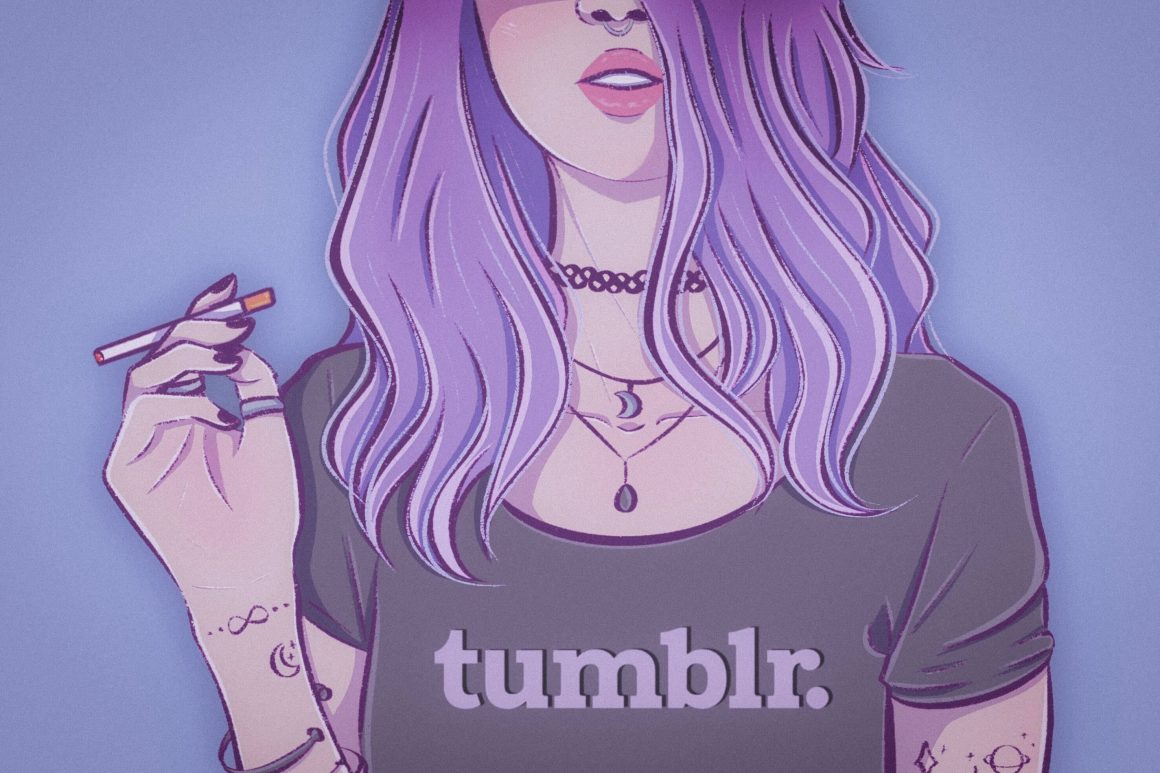
GenZ and the rise of Tumblr-core
By Nazeefa Ahmed, March 10 2023—
It’s 2014. Lana Del Ray just released Ultraviolence and screenshots of her “sad girl” lyrics made rounds across the image-curating social media site, Tumblr. Melancholy was the motto as the idealization of drugs, mental disorders, and extreme dieting became as commonplace as the “heroin-chic” look glossing magazine covers in the 90s. Social media and media in general were up to its manipulative antics once again by putting women at war with their own bodies.
But the Tumblr era was from a different universe it seems. It was a time before sleazy influencers and unrelenting product placements, before TikTok trends ruined a decent song by speeding up the original. It was a time of artful content curation and tight-knit underground communities who connected over similar interests. Social media had been what it proclaimed to be — authentically social.
The post-Tumblr era, however, popularized perfect selfies with golden-hour lighting and sculpted “Instagram brows.” The Kardashians ruled this era with photoshop and exaggerated BBLs. Trendy photos of the time were taken and shared to present oneself as ideal, whether in one’s physical traits, or the lifestyle one can afford to live. The individual was the focal point, with the “perfect” background, lighting, and caption to top it off. Often, it was impossible to get such a photo on the first try, so users would sift through many photos with minuscule differences to finally find the one.
GenZ participated in the post-Tumblr era during our adolescence, and yet we have chosen to return to simplicity and authenticity, and are shifting cultural norms. We now want blurry memories, imperfect smiles, random objects, and anything that captures who we truly are. We want our photos to be objectively bad, but subjectively meaningful against the backdrop of our existence. It doesn’t really matter how we look in the photo if the moment is captured authentically.
Proof of this cultural shift is clear with the declining popularity of Snapchat culture with its face-sculpting animal and butterfly filters. What is the point of sharing a photo if we are not representing ourselves as we are? In comes BeReal, a contrasting social media site that tells its users to take a photo at random times of the day. It is now socially encouraged to share your gruelling study session, your Tim Hortons run on the way to class, or even a (truly) candid pose while eating out with friends — all without the unnecessary functions and text that Snapchat offers.
Instagram posts now are a curation of our lives, captured creatively, and shared as a “dump” of experiences. We don’t have to be the focal point because there is beauty to be seen in even the mundane — the sleepy café, university library, and neighbourhood park all have undiscovered potential. It appears that the quality of the images is not as important as it once was.
In fact, in the era of three-camera phones and any filter you can imagine, Gen Z finds solace in old film cameras and decade-old aesthetics to artificially make the present an idealized past. We are the masters of nostalgia, taking the best of the past and making it our own as a coping mechanism for the harsh realities of our present and future. The world is moving too fast and we are taking control by purposefully slowing down to appreciate our limited time.
The pandemic forced our generation to deeply consider what was important in life: the illusion of perfection or the reality of imperfection. We desire to capture moments rather than still-shots, and emotions rather than a sculpted image of the person we wish to be. A picture is worth a thousand words only when it is filled with life.
This article is a part of our Opinions section and does not necessarily reflect the views of the Gauntlet editorial board.
